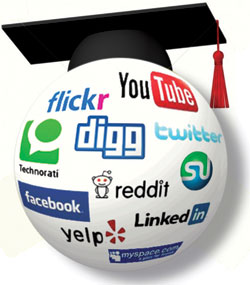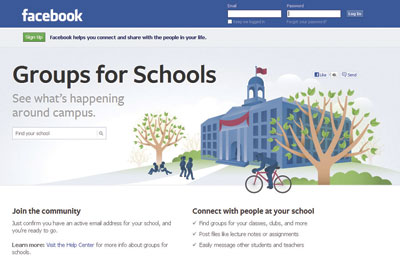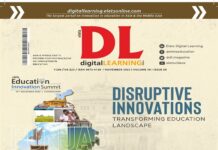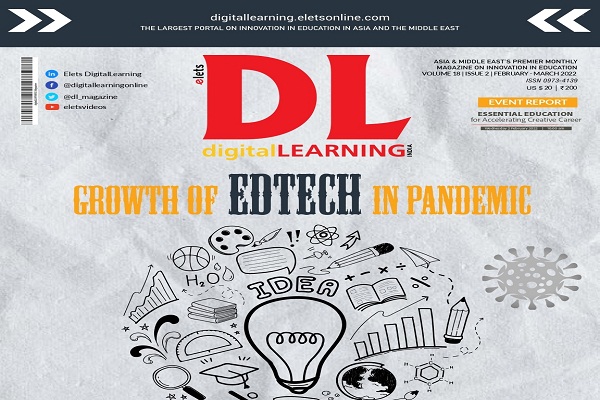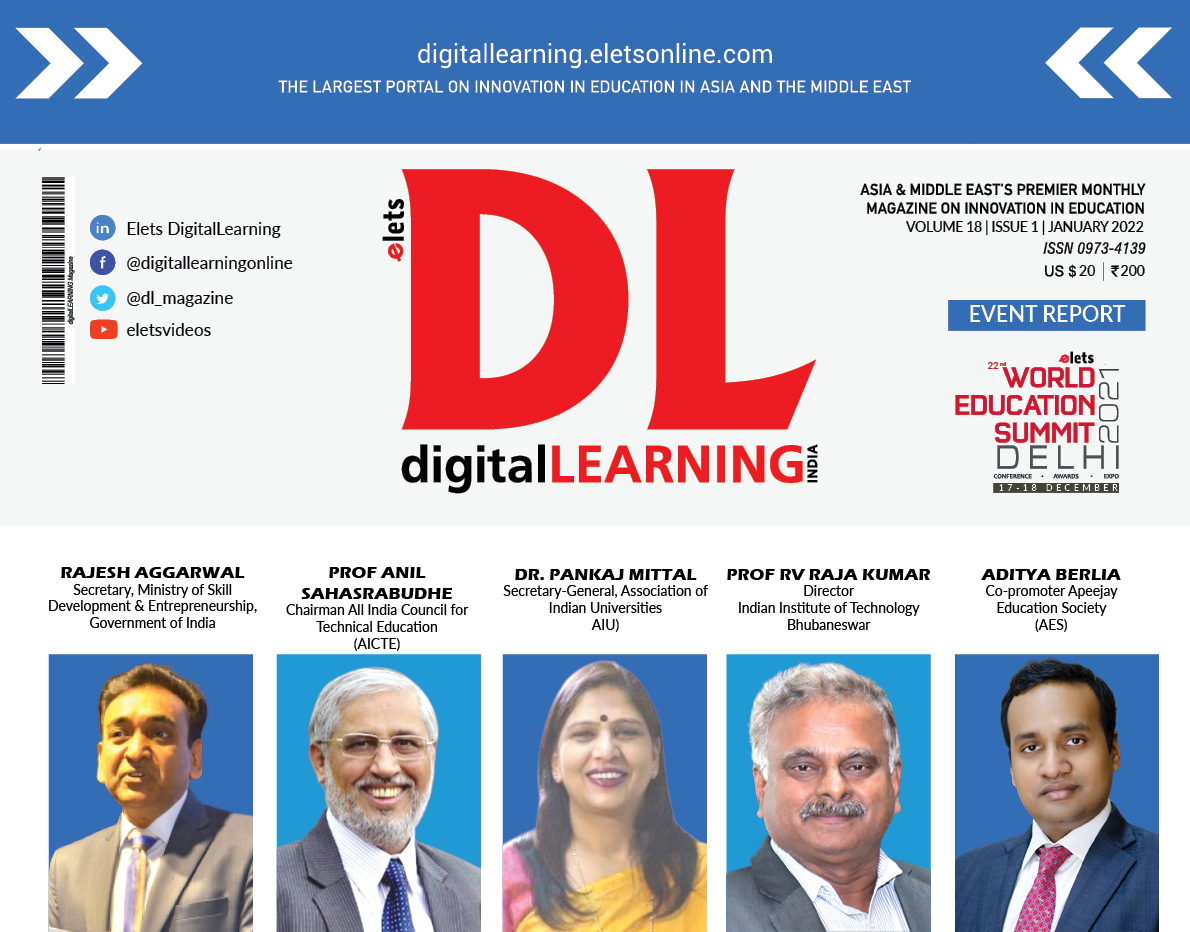
In today’s hyper-connected world, where life is chronicled on timelines and status updates, where klout is becoming more important than clout, and where a tumblr is not a student using bad spelling, will social media give a Second Life to education?
By Anand Agarwal and Ishvinder Singh, Elets News Network (ENN)
It might seem hard to believe, but the Merriam Webster dictionary (the online version, of course) says that the first known use of the phrase ‘social media’ occurred as recently as 2004. The importance this innocuous phrase has come to occupy in our social discourse, not only shows how rapidly life is evolving in the Information Age, it also shows the disruptive power of this umbrella term, which, to quote the Online Merriam Webster, comprises of all “forms of electronic communication… through which users create online communities to share information, ideas, personal messages, and other content. Social media has had a profound impact on politics – ask Barack Obama who raised millions of dollars in campaign funding through twitter, or ask some rather less fortunate politicians closer home, who lost their jobs in the aftermath of seemingly innocuous tweets. Social media has had a great impact on governance – ask the India Against Corruption geeks who mobilised huge crowds online. Social media has similarly impacted almost all areas of human endeavour, be it business, popular culture, sports, entertainment, cutting edge research (more on that later), fashion and what have you. In this light, it is hardly surprising to see social media tools playing an ever more important role in the field of education, and at all levels.
Albert Bandura, a Canadian-born Professor of Psychology at the Stanford University is one of the world’s most influential psychologists. Bandura has put forth a Theory of Social Learning, which says that the most learning takes place due to observation and imitation. This ‘observational learning’ was empirically confirmed in Bandura’s famous Bobo doll experiment of 1961, wherein children who watched adults being violent towards dolls later replicated the same behaviour without any inducement or provocation.
While it would be a stretch to link the observational models of learning (that rely more on physical proximity and observations) to this the social media tools of this day and age, it would be difficult to totally disregard the important role social media plays in helping discover and connect with people or follow conversations that one might never have come across in the physical world. By enlarging and enriching the universe from which one can draw upon for experiences and acquaintances, social media is indeed doing yeoman’s service in expanding learning.
Cutting-edge Research, on a Social Network
![]() So social media is only for the young and frivolous, right? Wrong! The Council for Scientific and Industrial Research (CSIR) has created a social network to help researchers working on cures for a number of deadly diseases collaborate better.
So social media is only for the young and frivolous, right? Wrong! The Council for Scientific and Industrial Research (CSIR) has created a social network to help researchers working on cures for a number of deadly diseases collaborate better.
The Open Source Drug Discovery (OSDD) project has its social network at http://sysborg2.osdd.net and it is a platform where experts from a number of disciplines related to the biological and chemical sciences interact, discuss ideas and forge alliances for collaborative work.
 Developing new drugs is perhaps one of the most expensive industrial research activities, with very low success rates and long gestation periods. The OSDD project ‘crowdsources’ the process, inviting everyone to contribute ideas and approaches towards solving problems that are otherwise handled in state-of-the-art, billion dollar labs funded by cash rich multinationals. By taking the open source approach, everyone’s ideas are open to the rest of the world to be improved upon. By facilitating interactions among interested parties – not merely microbiology or chemistry experts, mind you – the OSDD project aims to tap into a pool of ideas for solving (for now) the increasingly perplexing problem of developing a drug for Tuberculosis (TB) that does not induce drug-resistance in the patient. The project has already mapped the entire TB genome successfully, and colleges across India, scientists and researchers from institutions and companies in India and abroad, retired professionals and educated women who preferred to become housewives rather than take up a career post-marriage, have all collaborated and contributed to the project.
Developing new drugs is perhaps one of the most expensive industrial research activities, with very low success rates and long gestation periods. The OSDD project ‘crowdsources’ the process, inviting everyone to contribute ideas and approaches towards solving problems that are otherwise handled in state-of-the-art, billion dollar labs funded by cash rich multinationals. By taking the open source approach, everyone’s ideas are open to the rest of the world to be improved upon. By facilitating interactions among interested parties – not merely microbiology or chemistry experts, mind you – the OSDD project aims to tap into a pool of ideas for solving (for now) the increasingly perplexing problem of developing a drug for Tuberculosis (TB) that does not induce drug-resistance in the patient. The project has already mapped the entire TB genome successfully, and colleges across India, scientists and researchers from institutions and companies in India and abroad, retired professionals and educated women who preferred to become housewives rather than take up a career post-marriage, have all collaborated and contributed to the project.
The government is often flayed for its outdated approach. This is one instance where it deserves accolades by the truckload. There is nothing not to ‘like’ in this initiative, which is bound to throw up more successes in the time to come.
Second Life, not Nirvana
The virtual reality platform Second Life, which allows you to create ‘avatars’, buy ‘property’, ‘settle down’ in a community of your choice, and interact with other ‘residents’ is one of the more popular virtual reality worlds in the cyberspace. A number of communities around education have sprung up on the platform, and some of the major educational institutes are present on Second Life. The Stockholm School of Economics has a ‘campus’ in Second Life, so have Indiana State University and Arkansas State University (ASU), among many others.
A number of ASU’s ‘real world’ courses make significant use of Second Life. Instructors develop simulations in the virtual world that aid experiential and immersive learning. For example, history courses have Second Life tours of the places and events being taught and a geography class is brought alive with simulated tours of locations across the world. Engineering students can build simulated versions of buildings, tools and what not, and see for themselves how the theory plays out in reality. Virtual meeting halls allow student and faculty avatars to interact and plan out the schedule. Second Life is one of the most popular platforms being used by universities across the world, and adds a dimension to education that classroom-confined teaching could perhaps never be able to. It is free to universities and students.
Microlearning
The popular microblogging site Twitter is not just empty blabber. It is also a gateway into the world of interesting, often astounding information. Hashtags – twitterspeak for identifying the topic a tweet is related to – can be quirky, inane or meaningless, but quite often also the key that unlocks doors to discussions one might have easily missed otherwise. Apps developed around twitter allow users to add value to tweets. For example, apps allow segregating tweets emanating from a particular location, draw analytics out of tweets, develop word clouds to identify which are the most active topics being discussed and so on.
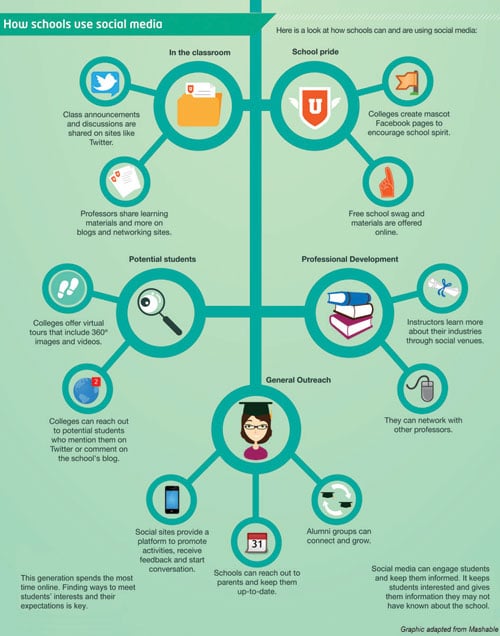 Tools such as Twitter allow classrooms to transcend limitations imposed by physical space, costs involved in increasing capacity and challenges of holding attention of a large audience. With increasing smartphone and tablet penetration, Twitter integration with classroom teaching has become feasible.
Tools such as Twitter allow classrooms to transcend limitations imposed by physical space, costs involved in increasing capacity and challenges of holding attention of a large audience. With increasing smartphone and tablet penetration, Twitter integration with classroom teaching has become feasible.
A study at the Purdue University established that use of Twitter in the classroom helped students overcome the shyness barrier, by allowing them to answer questions without having to raise hands to identify themselves in a big lecture hall. Increased participation, in turn, has been linked to better academic performance overall. Increased communication also opens up perspectives and allows one to appreciate different points of view.
Another experiment conducted at one of the leading American universities divided a group of 125 students into a set of 70 who used Twitter for educational purposes, and 55 who relied on traditional communication only. The two groups were monitored throughout a semester and it was found that the Twitter-using group was almost twice as engaged as the group relying solely on traditional communication. The Twitter user group’s average Grade Point Average (GPA) was 0.51 higher than that for the other group. Twitter had helped improve scores by taking engagement beyond the classroom boundaries and encouraging students to explore the subjects in greater depth!
A Book Everyone Loves
Facebook – the world’s largest social network – was first started as a way to help Harvard students stay in touch and interact. It soon became so successful that its gates to the rest of the world shortly thereafter. With more than 900 million active users, Facebook is, for many, synonymous with social networks, or rather, it might well be the other way round.
Schools and educational institutes have for long had profiles on Facebook, but it recently unveiled an initiative called Groups for Schools that, as the name says, is meant exclusively for schools. The feature is available only to students and faculty with an active school email address. The feature would allow users to share un-copyrighted files within the group, but subject to a limit of 25 MB per file. The feature is currently restricted to education institutions within the US and to users with an active .edu address, but it is hoped that further rollouts would cover the rest of the countries as well.
A rich ecosystem of apps that integrate with the Facebook Application Programming Interface (API) has evolved, allowing users to further enrich their experience. There are apps that help users create flashcards for easy revision, share info about the books they read with their Facebook friends, tag books, loan books, create presentations, create to-do lists… the list is endless.
With improving internet speeds and increasing penetration of technologies such as 3G, Broadband Wireless Access (BWA), 4G-LTE (Long Term Evolution) etc., high speed internet on the go would become increasingly common in the country. Already, sites such as YouTube host virtual classrooms of a number of universities where video lectures from eminent professors are available free of cost. The Indira Gandhi National Open University (IGNOU) also has a YouTube channel and a number of lectures are available online. Yale offers over 100 courses online for free, with tight integration around YouTube. Similar content is available from a number of other globally-renowned universities, and also on other video-sharing platforms such as Vimeo or Dailymotion.
Other Tools
It is almost impossible to chronicle all available social media platforms in a short article such as this, and a lot many have been left untouched. Social bookmarking tools such as delicious, stumbleupon, reddit, digg, etc. make it ridiculously easy to discover topics of interest on the Web and also share it with friends. All of these are available as browser plugins that install with minimal fuss and make discovering and sharing interesting content as easy as snapping your fingers. A multitude of blogs and wikis have sprung up around specific topics, allowing users to interact with varying degrees of control over content. Wikipedia is the world’s de-facto go-to place for information on any topic, has been built almost entire by volunteers, and heavily relies on users for maintaining accuracy and concurrency of the articles. Photo sharing sites such as Flickr and Picasa, ‘visual’ social networks such as Pinterest, apps such as the billion-dollar Instagram etc., are all being used for educational purposes to varying degrees.
Finally, the community radio – an ‘offline’ platform – is a vital social media variant that is often precluded from such discussions. A number of universities in India have started community radio services, and this fosters a vibrant interaction amongst the student and faculty in campuses. With all phones coming equipped with FM receivers, and a phone in every hand, the power of this social media platform is immense, and is yet to be tapped properly.
Challenges of Social Media
As with almost everything in life, social media comes with a caveat attached – handle with care. Too much of a good thing is also not good, after all. Social media poses a variety of technical and social challenges to users. Most social media platforms are hosted and developed outside of India (and mostly in the US), and would have their maintenance or otherwise scheduled downtimes in alignment with the geographical location of their servers and data centres. Scheduling classes or interactions might then be a little tricky, though given how rare the downtimes are, this is not a significant risk.
Use of data without authorisation is a challenge most social media platforms have not been able to fully resolve yet, and the threat to privacy would seem to be the biggest challenge in tightly integrating these tools with education, particularly where children or young adults are involved. In addition, given the fact the most of the data is stored outside Indian jurisdiction, it would be a challenge to seek legal recourse in case of any breach of privacy, harm or other injury arising out of the misuse of such data. The differences in cultural orientations across geographies pose another set of complex challenges. Finally, comfort of the teachers and students with technology and the cost of devices and bandwidth to make optimal use of the social media platforms present another set of challenges.








